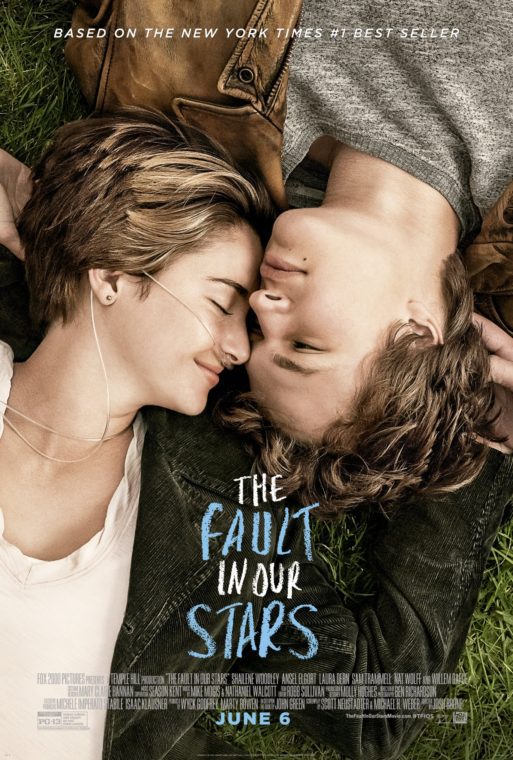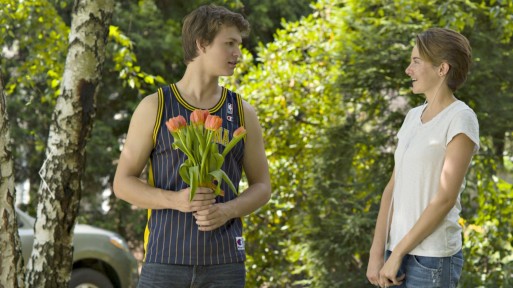 The Fault in our Stars (2014) is director Josh Boone’s adaptation of the 2012 novel of the same name. On one hand, the book is a story of first love between witty teenagers Hazel (Shailene Woodley) and Augustus (Ansel Elgort). However, The Fault in Our Stars, first as a book and now as a film, takes a highly commendable step towards opening up the conversation on teens with terminal illnesses.
The Fault in our Stars (2014) is director Josh Boone’s adaptation of the 2012 novel of the same name. On one hand, the book is a story of first love between witty teenagers Hazel (Shailene Woodley) and Augustus (Ansel Elgort). However, The Fault in Our Stars, first as a book and now as a film, takes a highly commendable step towards opening up the conversation on teens with terminal illnesses.
Soon, we realize that this isn’t just a film about dying: it’s a film that makes us reconsider how we think about those, especially teens, who want to disassociate the word “suffer” from terminal illness.
Both of the film’s adolescent protagonists have life changing diagnoses. Hazel has terminal thyroid cancer that slowly impairs her ability to breathe without an oxygen tank, while Gus (Augustus) lost a leg from his osteosarcoma. The two meet at a classically awkward teen support group and are instantly attracted to one another’s gall. Neither one of them is looking for a pity party. Nor do they look to the heavens for comfort. Soon, we realize that this isn’t just a film about dying: it’s a film that makes us reconsider how we think about those, especially teens, who want to disassociate the word “suffer” from terminal illness. That’s not to say both characters don’t experience great pain and frustration (how do you make out with a breathing tube?), but they’re hardly ones to wallow.
Now, sometimes you’d need a machete to scrape the cheese from The Fault in Our Stars, which tries to carry across dialogue much too pointed and eloquent for teenagers.
Now, sometimes you’d need a machete to scrape the cheese from The Fault in Our Stars, which tries to carry across dialogue much too pointed and eloquent for teenagers. Take that pivotal first meeting between the protagonists: Hazel is disgusted when Augustus puts a cigarette in his mouth. “It’s a metaphor, see,” he says, “you put the killing thing right between your teeth, but you don’t give it the power to do its killing.” Or, when asked about his greatest fears at group therapy, he coolly replies, “I believe the universe wants to be noticed. I think the universe is improbably biased toward the consciousness, that it rewards intelligence in part because the universe enjoys its elegance being observed. And who am I, living in the middle of history, to tell the universe that it-or my observation of it-is temporary?”
Woodley’s acting is the film’s true saving grace. As in The Descendants, where she plays the world’s best worst teenager, she’s able to carry across a role that demands her to embody naïveté, cruelty and grace at once. No matter how infuriating she can be at times, she owns her role so well that we’re always on her side.
Nitpicking aside, the realization of The Fault in Our Stars is something to be celebrated: it’s brought a bright, far-reaching voice to teens with terminal illnesses that has been much needed.
- If you liked this:
- Read our past book review of The Fault in our Stars.
- Does “Sick Lit” romanticize dying for teens?
- You may peruse more of our book and film reviews here.

 The Fault in Our Stars Directed by Josh Boone
The Fault in Our Stars Directed by Josh Boone



 Passing of Beloved Comedian Births a New Comedy Festival
Passing of Beloved Comedian Births a New Comedy Festival

 The Spiritual Symbolism of Cardinals
The Spiritual Symbolism of Cardinals














